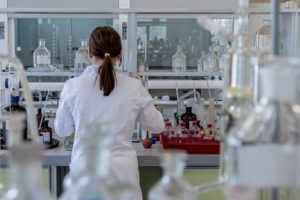
Contributor: Mark S. Gold, M.D., Professor, Washington University School of Medicine - Department of Psychiatry
Drug Use Changes The Brain Pleasure Systems
Drug addiction is defined by self-administration, compulsive drug-seeking, drug-rationing, and loss of control [1]. Chronic use itself may be followed by anhedonia, the emergence of a profoundly painful and negative emotional state [2].
I started my career as a pleasure researcher and studied drugs of abuse as a proxy measure and because neuroscientific modeling use and dependence in animals had been developed. Rodent studies have shown that naturally-occurring pleasure is mediated by well-developed adaptive mesocorticolimbic dopamine circuitry. After years of rat studies, it is clear that all drugs of abuse target, change and disrupt this circuitry.
Most importantly, human neuroimaging investigations by Volkow and her co-workers [3] indicated that the identical brain circuitry is activated by quite diverse pleasures, suggesting a common neural pathway shared by all rewarding stimuli and behaviors. In SUDs, anhedonia, depression or dysphoria occurs as the normal hedonic system becomes deranged in the chronic use as well as the abstinent, post-use states.
As drug-taking becomes compulsive-like, the factors that motivate behavior are hypothesized to shift to drug-rewarding behavior that is driven not only by positive reinforcement but increasingly by pain-negative reinforcement. Negative reinforcement is where Hyperkatifeia comes in to play.
Hyperkatifeia (derived from the Greek “katifeia” for defeated or dejected or negative emotional state) is produced in animal models by repeated self-administration to drugs. Drug use progresses from use to produce a high (positive reinforcement) and then the addicted or compulsive use to relieve the negative mood state (negative reinforcement) [4].
Drug use and addiction have numerous toxic or negative motivational effects that may be due to drug-induced neurotoxicity or neuroadaptive mechanisms. Regardless, dependence is progressive, and trying to cut down or quit is accompanied by a painful negative mood state which the addict learns can be reversed by using or a slip or relapse. Reversal of such an extreme negative can be considered a strong reinforcer for both the brain and behavior.
Hyperkatifeia
Hyperkatifeia is defined as an increase in the intensity of the constellation of negative emotional or motivational signs and symptoms of withdrawal from drugs of abuse [5]. In animal models, repeated extended access to drugs or opioids results in negative emotion-like states, reflected by the elevation of reward thresholds, lower pain thresholds, anxiety-like behavior, and dysphoric-like responses.
 Such negative emotional states that drive negative reinforcement are hypothesized to derive from the within-system dysregulation of key neurochemical circuits that mediate incentive-salience and/or reward systems (dopamine, opioid peptides) in the ventral striatum and from the between-system recruitment of brain stress systems (corticotropin-releasing factor, dynorphin, norepinephrine, hypocretin, vasopressin, glucocorticoids, and neuroimmune factors) in the extended amygdala.
Such negative emotional states that drive negative reinforcement are hypothesized to derive from the within-system dysregulation of key neurochemical circuits that mediate incentive-salience and/or reward systems (dopamine, opioid peptides) in the ventral striatum and from the between-system recruitment of brain stress systems (corticotropin-releasing factor, dynorphin, norepinephrine, hypocretin, vasopressin, glucocorticoids, and neuroimmune factors) in the extended amygdala.
Hyperkatifeia can extend into protracted abstinence and interact with learning processes in the form of conditioned withdrawal to facilitate relapse to compulsive-like drug-seeking. It follows and should come as no great surprise that substance use disorders, depression, and anhedonia go hand-in-hand.
Dopamine and Insights From Cocaine Research
We started looking at dopamine, pain, and pleasure in earnest during the 80s when the opioid epidemic morphed into a cocaine epidemic [6]. Cocaine was not even considered a drug capable of producing addiction or dependence as the withdrawal syndrome was psycho-behavioral rather than overt like sedative-hypnotics or opioids or alcohol.
But cocaine was highly addictive and very hard to stop. Cocaine users came into treatment joking that they are addicted to a non-addicting drug as they had uncontrollable urges to use, prolonged binges, and used until their supply or money ran out.
A cocaine binge is typically followed by a state Psychiatrist’s describe as a psychomotorically-retarded depression. The cocaine user crashes or suffers from severe depressive symptoms mixed with irritability, suicidal thoughts and anxiety Makou and Koob [7] developed and studied the animal model we use today.
Rats were allowed to self-administer cocaine intravenously for prolonged periods, and their brain reward thresholds were then assessed using intracranial self-stimulation (ICSS) thresholds considered a proxy for "hedonic-anhedonic" state. In cocaine withdrawal, ICSS thresholds are elevated, reflecting an "anhedonic" state.
The magnitude and duration of the "anhedonic" state are directly related to the amount of cocaine consumed during the binge. This state change in the brain and alteration in pleasure-pain, maybe a common feature of other drug dependency states and helps us explain the challenges in treatment.
No wonder treatment adherence is so bad! If the cocaine abstinence state is also typical for the post addiction state, then simply cutting down or detoxifying from opioids can be expected to produce acute withdrawal but also prolonged anhedonic changes that persist and become a driver for drug-seeking, craving, relapse, and overdose.
These important findings are often ignored. Depression, like anhedonia, is complicated, looks and feels differently to a human than a rodent.
We have studied cocaine, tobacco, alcohol, cannabis, and opioid use disorders in man and modeled these in the laboratory. While animals avidly self administer all drugs of abuse and addiction can be modeled and studied in the laboratory, treatments that work for people is quite a different story.
We have used these animal models to develop treatments that replace a drug and reduce withdrawal such as methadone or buprenorphine for heroin or oxycontin. We have also used these models to develop non-opioid treatments for withdrawal like clonidine or lofexidine and reversal agents for overdose like naloxone or Nalmefene.
With animals, self-administering opioids in the laboratory, we can block drug reinforcement with Naltrexone and cure addiction. In human cases, it is not that easy.
Animal Models and Lack of General Treatment Effectiveness
Researchers have developed much more effective treatments for rats than for humans with substance use disorders (SUDs). Drugs of abuse are powerful activators of the brain dopamine, but also stress systems.
Dynorphin release following a binge drug consumption may cause dysphoric and anhedonic responses experienced during withdrawal. These Kappa opioid effects, in turn, contribute to craving, relapse, and use.
 Why this occurs is not clear, but one reason is that the brain reinforcement systems hijacked by drugs of abuse are not the same in rats and humans. So, we use animals and animal models to look for new treatments, but they do not capture the fully human experience of drug-seeking, drug use, drug reinforcement, and drug-related changes in pain-pleasure systems.
Why this occurs is not clear, but one reason is that the brain reinforcement systems hijacked by drugs of abuse are not the same in rats and humans. So, we use animals and animal models to look for new treatments, but they do not capture the fully human experience of drug-seeking, drug use, drug reinforcement, and drug-related changes in pain-pleasure systems.
Another reason is that we have been very good at studying and understanding acute drug intoxication and pleasure and not as quick to understand anhedonia, depression, and drug craving that accompanies drug discontinuation. In a comparable efficacy study done by Nunes’s group at Columbia comparing injectable naltrexone to buprenorphine, it became clear that medication-assisted treatments (MAT) for opioid use disorder are important, but the majority of the study’s participants quickly dropped out [8].
Fewer than half of all patients, about 44 percent, completed the 24-week trial. Many experts have been considering long-acting buprenorphine treatment [9] as a result of the adherence and drop out problems with MAT treatments that work so very well in the laboratory. Many experts were very excited about Buprenorphine as it seemed to be the ideal dual treatment as it is not only a mu partial agonist but is a potent kappa opioid antagonist having behavioral and antidepressant activity [10].
Sadly, adherence and outcomes have not lived up to hopes. Rarely do addiction experts talk about returning the addiction to pre-addiction psychological, social and brain function. Drugs change the brain and the balance of pleasure and pain.
Recently, Koob has led a revival of interest in the pain associated with [11] withdrawal, and others have looked at despair, anhedonia, and suicidal thoughts as related to relapses and poor outcomes. Hyperkatifeia can extend into protracted abstinence and interact with learning processes to promote relapse. In many studies, negative urgency was associated with measures of addiction severity and comorbid addiction or other psychopathology.
Several findings indicate a greater or unique role for negative urgency compared with other recognized constructs of impulsivity, including positive urgency. The combination of loss of reward function and recruitment of brain stress systems is a double hit producing a negative emotional state that is responsible for the negative reinforcement driving, at least in part, the compulsivity of addiction.
The brain regions tied to pleasure are naturally stimulated by sex, food, achievement, and consuming drugs. Drugs are faster, require less work, and may produce greater reinforcement than singing in the church choir, reading a book, studying or altruism.
Develop Treatments That Work in Humans and Return the Addict to Pre-Morbid Brain Functioning
Over many years the controversy of dopamine involvement in pleasure/reward has led to confusion in terms, such as trying to separate motivation from pure pleasure (i.e., wanting versus liking) [12]. Human experience and study are now much more critical and important.
Extrapolations from non-humans to humans may be more fiction than fact. The transition from drug use to addiction is accompanied by the downregulation of brain reward circuitry and the enhancement of ‘‘antireward’’/stress circuitry that involves an opponent process ‘‘dark side’’ of emotional dysregulation.
 Bad decision-making, impulsive bad decisions may be due to negative urgency [13] that may reflect impairments in ‘‘top-down’’ cortical-to basal ganglia and cortical-to-extended amygdala processing, leading to a reduction of inhibitory control over potentially detrimental actions. Such impairments may yield heightened ‘‘bottom-up’’ basal ganglia and extended amygdala processing, leading to greater attention to incentive salience, pathological habits, or cognitive resource interference from emotion-evoking stimuli.
Bad decision-making, impulsive bad decisions may be due to negative urgency [13] that may reflect impairments in ‘‘top-down’’ cortical-to basal ganglia and cortical-to-extended amygdala processing, leading to a reduction of inhibitory control over potentially detrimental actions. Such impairments may yield heightened ‘‘bottom-up’’ basal ganglia and extended amygdala processing, leading to greater attention to incentive salience, pathological habits, or cognitive resource interference from emotion-evoking stimuli.
The rewarding effects of drugs of abuse, development of incentive salience, and development of drug-seeking habits in the binge/intoxication stage involve changes in dopamine and opioid peptides in the basal ganglia. Our brain’s stress response system is hypothesized to be activated by acute excessive drug intake, to be sensitized during repeated withdrawal, to persist into protracted abstinence, and to contribute to the compulsivity of addiction.
Drugs make stress, and anxiety response systems fail and over-respond when drugs are not available. Acute withdrawal from all major drugs of abuse produces increases in reward thresholds, increases in anxiety-like responses, and increases in extracellular levels of CRF in the central nucleus of the amygdala.
Negative urgency is increased across alcohol, tobacco, cocaine, gambling, and OUDs. Drug taking makes the hedonic negative emotional state worse, and typically, the user settles on temporary relief with compulsive drug-taking. Use and dependence produce negative emotional states seen in animals in elevation of reward thresholds, lower pain thresholds, anxiety-like behavior, and dysphoric-like responses.
The increases in negative emotional states and dysphoric and stress-like responses in the withdrawal/negative affect stage involve decreases in the function of the dopamine component of the reward system and recruitment of brain stress neurotransmitters in the extended amygdala. The craving and deficits in executive function in the so-called preoccupation/anticipation stage involve the dysregulation of key afferent projections from the prefrontal cortex and insula, including glutamate.
References:
[1] https://www.addictionpolicy.org/research-you-can-use
[2] Koob, G. F., & Volkow, N. D. (2016). Neurobiology of addiction: a neurocircuitry analysis. The lancet. Psychiatry, 3(8), 760–773. doi:10.1016/S2215-0366(16)00104-8
[3] https://www.ncbi.nlm.nih.gov/pmc/articles/PMC3477468/
[4] Blum, K., Gondré-Lewis, M., Steinberg, B., Elman, I., Baron, D., Modestino, E. J., … Gold, M. S. (2018). Our evolved unique pleasure circuit makes humans different from apes: Reconsideration of data derived from animal studies. Journal of systems and integrative neuroscience, 4(1), 10.15761/JSIN.1000191. doi:10.15761/JSIN.1000191
[5] Koob GF Neurobiology of Opioid Addiction: Opponent Process, Hyperkatifeia, and Negative Reinforcement. Biol Psychiatry. 2020 Jan 1;87(1):44-53. doi: 10.1016/j.biopsych.2019.05.023. Epub 2019 Jun 12.
[6] https://www.sciencedirect.com/science/article/pii/0149763485900223?via%3Dihub
[7] Koob GF1, Ahmed SH, Boutrel B, Chen SA, Kenny PJ, Markou A, O'Dell LE, Parsons LH, Sanna PP. Neurobiological mechanisms in the transition from drug use to drug dependence.Neurosci Biobehav Rev. 2004 Jan;27(8):739-49.
[8] Lee, J. D., Nunes, E. V., Jr, Novo, P., Bachrach, K., Bailey, G. L., Bhatt, S., … Rotrosen, J. (2018). Comparative effectiveness of extended-release naltrexone versus buprenorphine-naloxone for opioid relapse prevention (X:BOT): a multicentre, open-label, randomised controlled trial. Lancet (London, England), 391(10118), 309–318. doi:10.1016/S0140-6736(17)32812-X
[9] Lofwall, M. R., Walsh, S. L., Nunes, E. V., Bailey, G. L., Sigmon, S. C., Kampman, K. M., … Kim, S. (2018). Weekly and Monthly Subcutaneous Buprenorphine Depot Formulations vs Daily Sublingual Buprenorphine With Naloxone for Treatment of Opioid Use Disorder: A Randomized Clinical Trial. JAMA internal medicine, 178(6), 764–773. doi:10.1001/jamainternmed.2018.1052
[10] Bruijnzeel AW1, Marcinkiewcz C, Isaac S, Booth MM, Dennis DM, Gold MS.The effects of buprenorphine on fentanyl withdrawal in rats. Psychopharmacology (Berl). 2007 May;191(4):931-41. Epub 2007 Jan 9.
[11] https://en.wikipedia.org/wiki/Hyperkatifeia
[12] Blum K, Gold M, Demetrovics Z, Archer T, Thanos PK, et al. (2017) Substance use disorder a bio-directional subset of reward deficiency syndrome. Frontiers in Bioscience, Landmark 22: 1534–1548.
[13] Zorrilla, E. P., & Koob, G. F. (2019). Impulsivity Derived From the Dark Side: Neurocircuits That Contribute to Negative Urgency. Frontiers in behavioral neuroscience, 13, 136. doi:10.3389/fnbeh.2019.00136
About the Author:
 Mark S. Gold, M.D., Professor, Washington University School of Medicine - Department of Psychiatry, also served as Professor, the Donald Dizney Eminent Scholar, Distinguished Professor and Chair of Psychiatry from 1990-2014. Dr. Gold was the first Faculty from the College of Medicine to be selected as a University-wide Distinguished Alumni Professor and served as the 17th University of Florida’s Distinguished Alumni Professor.
Mark S. Gold, M.D., Professor, Washington University School of Medicine - Department of Psychiatry, also served as Professor, the Donald Dizney Eminent Scholar, Distinguished Professor and Chair of Psychiatry from 1990-2014. Dr. Gold was the first Faculty from the College of Medicine to be selected as a University-wide Distinguished Alumni Professor and served as the 17th University of Florida’s Distinguished Alumni Professor.
Learn more about Mark S. Gold, MD
The opinions and views of our guest contributors are shared to provide a broad perspective of addictions. These are not necessarily the views of Addiction Hope, but an effort to offer a discussion of various issues by different concerned individuals.
We at Addiction Hope understand that addictions result from multiple physical, emotional, environmental and genetic factors. If you or a loved one are suffering from an addiction, please know that there is hope for you, and seek immediate professional help.
Reviewed and Approved by Jacquelyn Ekern, MS, LPC on January 13, 2020
Published January 13, 2020, on AddictionHope.com
